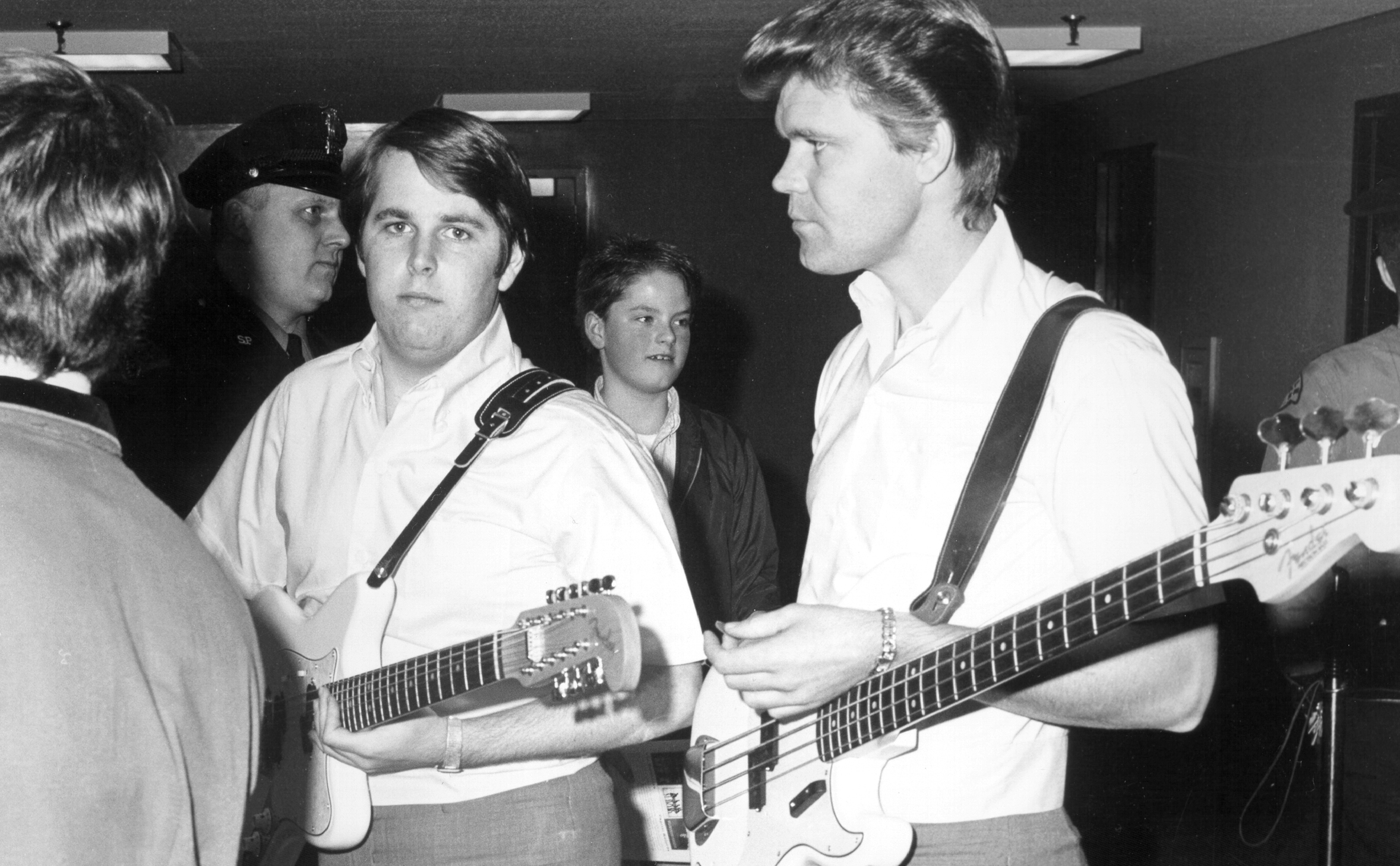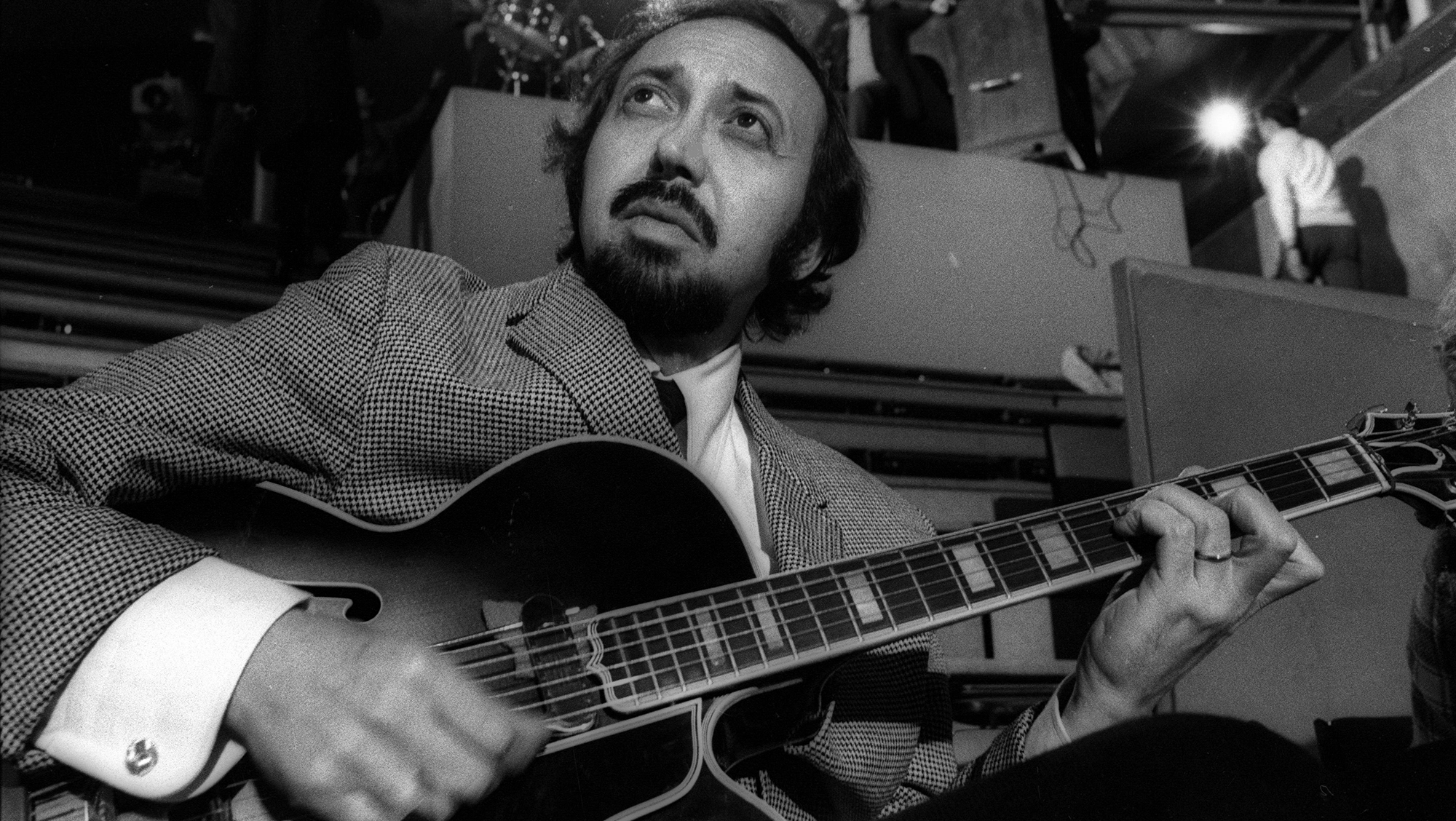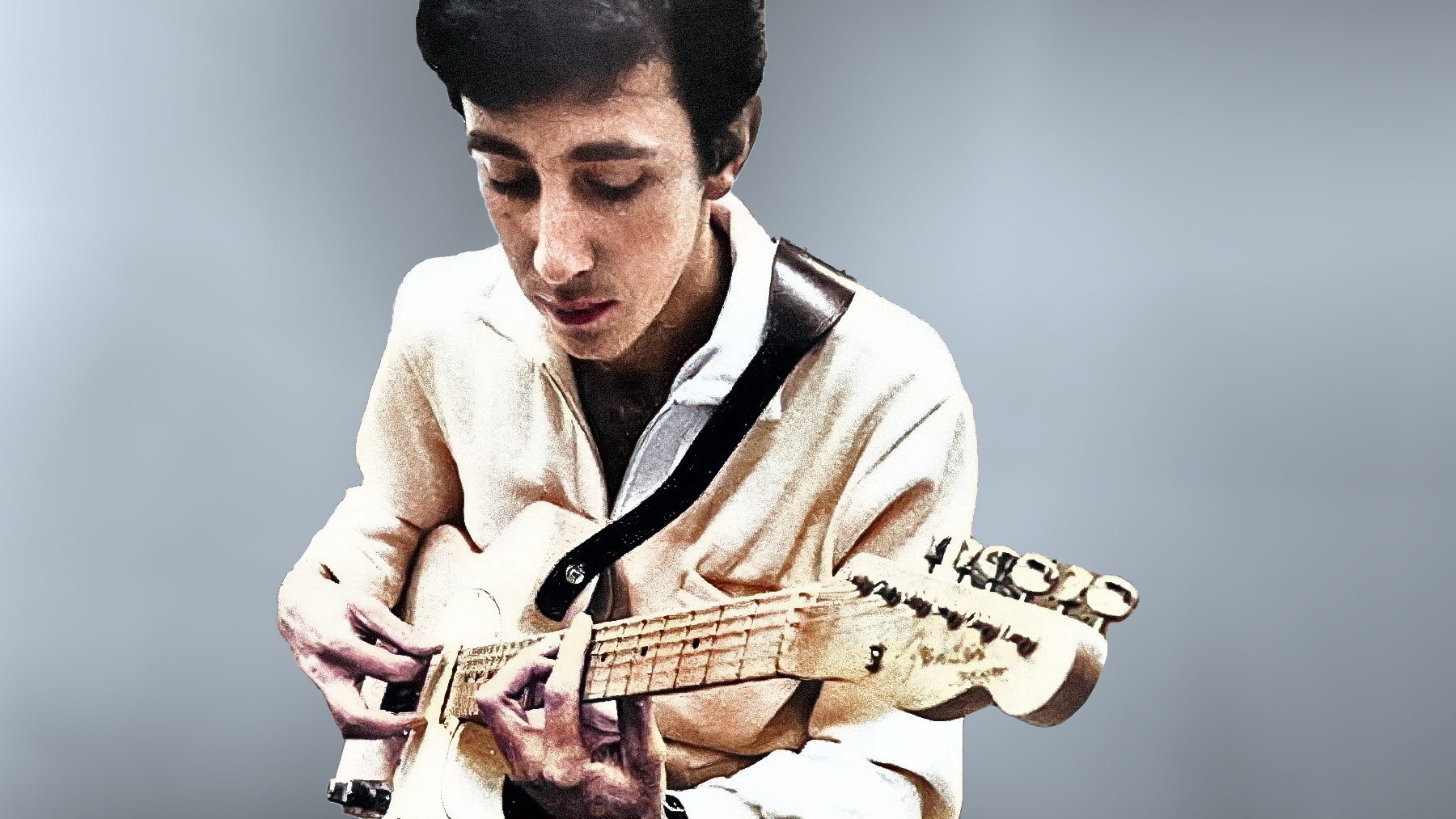"I got a guitar, amp and $500 for eight bars of work.” Wrecking Crew guitar aces Billy Strange and Tommy Tedesco recalled the mad guitar genius of the Beach Boys' Brian Wilson
Wilson, who died June 11 at age 82, gave some of the studio world's guitar greats their shining moments on the Beach Boys' hit records

To the average music listener, the Beach Boys are known for their sunny pop-rock tunes about surfing, California hot-rod culture and pretty girls in bikinis. Early 1960s cuts like “Fun, Fun Fun,” “Surfing’ U.S.A.” and “California Girls” sum it up pretty well.
But as true fans of the group know, Brian Wilson’s songcraft and arrangements developed at a rapid pace in the mid 1960s, once stage fright pushed him off the road and back home in the studio, where he found his joy and creative drive. There he created two of his greatest achievements: the 1966 album Pet Sounds — with indelible tunes that include “God Only Knows,” “Wouldn’t It Be Nice” and “Sloop John B” — and its followup single, “Good Vibrations,” a groundbreaking mix of psychedelic and baroque pop.
It was here that Brian Wilson — who died on June 11 at age 82 — became one of the decade’s most significant pop songwriters and creators. And he did it with some of the finest guitarists in the business, several of whom shared their recollections of working with him for an article in Guitar Player's December 1993 issue.
As Wilson’s songwriting progressed rapidly from the rudimentary charms of 1963's “Surfin’ U.S.A.” to the sophisticated balladry of the following year's “Don't Worry Baby,” he began to look beyond the musical talents of the Beach Boys, whom he continued to use largely for vocals and the occasional guitar work of his brother Carl. Wilson wanted the finest players available to bring his music to life.
From 1965's The Beach Boys Today! through the masterwork Pet Sounds and the failed Smile sessions of 1967, the Beach Boys’ music was powered by the Wrecking Crew, the Los Angeles–based collection of ace sessions players who were the de facto house band for Phil Spector. Among them were such master guitarists as Tommy Tedesco, Barney Kessel, Glen Campbell, Billy Strange, Jerry Cole and Bill Pittman. Also on hand were bassists, Carol Kaye, Ray Pohlman and Lyle Ritz, keyboardists Larry Knechtel and Don Randi, saxman Steve Douglas, and drummer Hal Blaine, among others.
With the Crew dominating the L.A. pop session scene and Brian Wilson in his creative prime, it's not surprising that so many hit records sprouted from their recording dates. But the sessions were also remarkable for the combination of good times and professional satisfaction they generated.

“That was the most fun I've ever had in the music business,” Billy Strange recalled. In the mid 1960s, Strange and fellow Crew member Glen Campbell were considered Hollywood's preeminent “hillbilly” guitarists.
All the latest guitar news, interviews, lessons, reviews, deals and more, direct to your inbox!
“Glen and I played on the country-funk side of rock and roll, and that was the new sound in the studio,” Strange said. “I’d get the call for a session, grab my Telecaster and my Fender Twin, give somebody the eight-bar solo they needed, and then pack up and hit the next session.
“We all came up through the studio ranks as sidemen, and we played with everybody. But there was never a time at a Beach Boys session when Brian didn't come up with something that was just absolutely amazing. He was a killer.”
Brian's gifts started to become clear on songs like “In My Room” and “I Get Around.” Both breezed by in just over two minutes of pure pop escape, but the former had an almost preternaturally gorgeous ache to it, and the latter used chordings and stop-and-go rhythms previously unheard on pop records.
In the studio. Wilson would ask for unusual instrument combinations to achieve the right feel. When he added vocals, there was finesse and fragility in the delicately clustered harmonies. The lyrics and melodies gave a new batch of American teens a soundtrack for puberty.
There was never a time at a Beach Boys session when Brian didn't come up with something that was just absolutely amazing. He was a killer."
— Billy Strange
Tommy Tedesco became one of Wilson's most prized players, although he began his Beach Boys work with a somewhat jaded attitude.
“I didn't think anything special about Brian when I first met him, but in those days I didn't really think anything special about anybody,” he remembers. “I played my parts and left. If I got a solo and I got paid, it was a good session.”
It wasn’t until Tedesco began to hear some of the finished Beach Boys songs that he realized Wilson was on to something.
“When we first started doing surfing music sessions, I went up to Brian Wilson and said, ‘What is surf music?’” Tedesco recalled. “He said he didn't know. I said, ‘Well, frankly, we're doing the same thing we did on the twist records,’ and it was true. It seemed like we were playing the same shit on everybody's records.
“It was boring to be a rhythm guitarist on pop records. Back then, I thought it was all a farce until I started hearing the Beach Boys records and realized that we really we're creating a big new sound.”

Tedesco favored Telecasters on the sessions, although he often used a little round Martin when an acoustic was called for on tracks like “Fun, Fun, Fun,” “Don't Worry, Baby” and “I Get Around.” He and Wilson would work closely together to determine what kind of guitar work guitar part would work.
“There was a lot of back and forth on everything,” Tedesco explained. “Brian would say to play straight eighth notes, and I'd do it. Then maybe I'd start to add some single notes. When Brian said ‘Okay,’ it was a keeper.
“But everything was hit or miss for the whole band in terms of getting parts together. Brian would play a little piano or hum something so that everybody got the idea. Then maybe he'd start with me and then move to the drummer, then the bass player. He'd build the tune.
"Looking back, I found that he knew a lot more than I gave him credit for. He had a tremendous ear.”
“Brian would give you the liberty of suggesting a part. He wanted you to match the softness or brightness of the tune with your instrument and get the right color.
— Jerry Cole
Jerry Cole, who claims he owned the very first Fender six-string bass, was sometimes called into double the lines of Carol Kaye or Ray Pohlman. His axe of choice was a ’57 Strat, and his workhorse amp was a 2x10 Fender Vibrolux. “I’d leave it on for two or three days and still didn't change the tubes for 10 years,” he revealed.
But Cole said he was always ready to contribute whatever sounds Wilson asked for.
“Brian would give you the liberty of suggesting a part,” Cole explains. “He wanted you to match the softness or brightness of the tune with your instrument and get the right color.
"But, of course, Brian had the final say. I'd pull out a Telecaster, a [Martin D-35], an oud, a mandolin, a sitar… whatever he wanted. If he had charts for difficult reading piece, he'd call the master, Tommy Tedesco.
“But, usually, it wasn’t so much what we read as what we read into the music that created a great record.”

The quality of the musicianship on those sessions may be best personified by Barney Kessel, whose work with the Beach Boys was a sideline to a jazz career that included stints with Charlie Parker, Benny Goodman and Oscar Peterson. Kessel played a Guild 12-string acoustic on several of the earliest Wrecking Crew sessions.
“I distinctly remember Glen Campbell and I playing in the engineering booth while the rest of the band was in the recording studio on the other side of the glass,” Kessel says. “I usually played a bit of everything, whatever the song needed. Brian and I got along just fine.”
The atmosphere Wilson maintained in the studio made it easy for the players to get along. With so many hot six-stringers together in a studio, there was always the possibility of ego clashes. But Tedesco says the sessions were always friendly and comfortable, although often quite noisy.
"The respect in the business for the sound we got on those Beach Boys records just grew and grew.”
— Tommy Tedesco
“When we got Billy Strange, Glen Campbell and Jerry Cole at the session, you couldn't hear yourself think,” he said. “One would be playing loud, and the others would be showing off, trying to outdo each other. It was like World War III when those guys started playing.
“But with that many guitars, you knew where you belonged; we didn't have to be told. We'd always be trading ideas for parts and making suggestions to each other. And the respect in the business for the sound we got on those Beach Boys records just grew and grew.”
By early 1965, Brian Wilson had stopped touring with the Beach Boys. He was first replaced by Glen Campbell and later by Bruce Johnston, who became a semi-permanent member of the band. Brian was interested in creating increasingly ambitious records, and by the end of that year had begun writing songs for the monumental Pet Sounds.

The tracks were painstakingly assembled from full-band all-day sessions that sometimes resulted in just a four-bar snippet of recorded music. But when Brian was after a sound, he'd do anything to get it, and he was often quite generous to the musicians who aided him.
“I was finally spending a quiet Sunday with my son,” Billy Strange remembered. “The phone rang, and it was Brian. He said I had to get down to [studio] Western 3 right away. I went, but I didn't bring a guitar.
Then he said, ‘By the way, take this damn guitar and amp home with you in case you need it again.’ He never asked me to play electric 12-string again."
— Billy Strange
“As soon as I buzzed in, he played a song — “Sloop John B.” — and said, ‘I want you to solo right here.’ I told him I didn't have a guitar, and he asked, ‘What kind of guitar would sound good on the track?’ I said I thought, an electric 12-string would work and that I'd bring one in Monday. But he said he had to have it right.
“He got people on the phones to find some music store owner to send over a Fender [Electric XII] 12-string and an amp. We waited around until they delivered this brand spanking-new guitar and amp. I played my eight-bar solo and told Brian I wouldn't bother to charge him for it. He insisted I turn in a bill.
“Then he said, ‘By the way, take this damn guitar and amp home with you in case you need it again.’ He never asked me to play electric 12-string again.
“But I got a guitar, amp and $500 for eight bars of work.”

